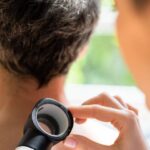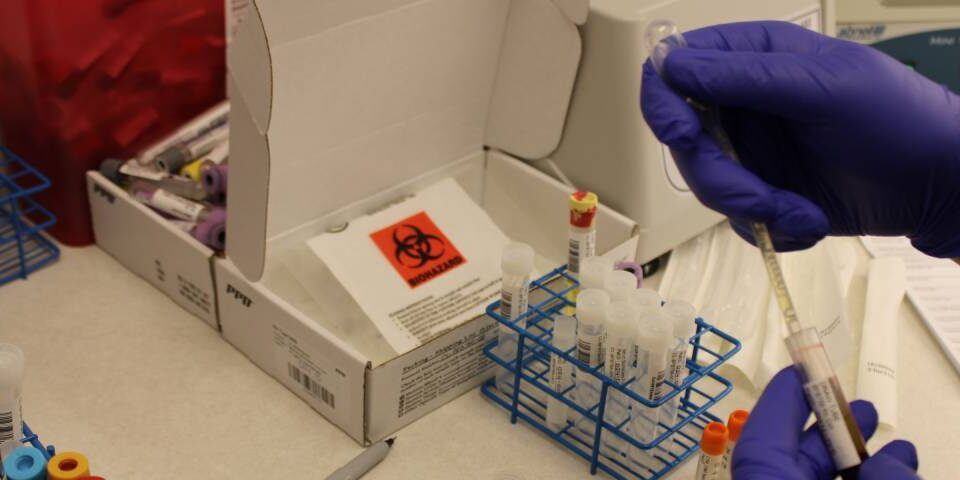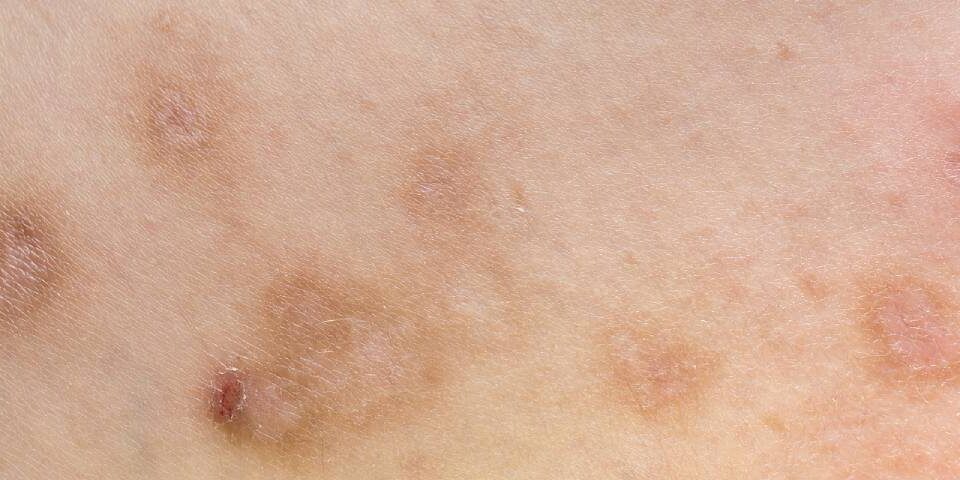
What to Expect When You Join a Clinical Trial
June 12, 2025
Managing Chronic Skin Conditions When Life Gets Busy
August 18, 2025The hot, humid, sweaty conditions of summer can irritate just about everybody, but people with skin conditions experience extra levels of discomfort. Sweat and skin irritation in hot weather often trigger flare-ups like eczema heat rash, urticaria, and many other chronic skin conditions. Since your skin is your body’s largest organ, it protects you and plays a significant role in how your immune system responds to external conditions like heat, humidity, and UV exposure. Individuals with sensitive skin often experience uncomfortable flare-ups because these environmental triggers can aggravate immune responses in the skin. As dermatology research scientists learn more about the skin-immune responses of different conditions, new therapies are being developed to help more patients get enhanced, targeted relief for warm-weather flare-ups. In fact, Apex Clinical Research Center is currently working on several dermatology clinical trials to help bring better therapies to help patients find relief from several summer skin irritations.
Environmental Triggers and the Immune System: Summer Sweat and Skin Irritation
As temperatures and humidity climb, the body responds. And since your skin is the first to contact these environmental conditions, it’s often the first to feel the irritation for several reasons, including:
Sweat and Friction
Excess heat causes your body’s natural cooling system to produce sweat. While this is necessary for body temperature regulation, sweat can also run into broken skin or irritate sensitive skin. Too much sweat lingering on the skin can mingle with oils and bacteria to cause rashes, yeast, and fungal infections. It can also aggravate conditions like acne, Gorlin syndrome, pyoderma gangrenosum, alopecia, and many others. Add friction from clothing or skin folds, and you have a recipe for genuine discomfort.
Skin Barrier Disruption
Summer’s heat can also dry out the skin too much, causing skin dehydration that makes it more sensitive to external irritants. Dehydration damages the skin’s protective barrier, causing it to appear dull and lined while making it more vulnerable to UV rays, allergens, bacteria, sweat irritation, and environmental pollution.
Increased Inflammation
At the same time, heat causes the blood vessels in the skin to dilate, which can trigger additional inflammation and redness. This inflammation can trigger immune responses that lead to even more inflammation, which plays a major role in many chronic skin conditions.
Histamine Reactions
Some people even have allergic-type reactions to heat, sweat, and sun exposure, which can cause itchy skin rashes and hives. The histamines—immune system chemicals that try to remove harmful particles from your body or skin to keep you safe—cause acute inflammation in the form of hives, rashes, and itchiness, designed to remove the offending particles or substances.
Microbial Imbalance
The hot, sweaty, humid conditions of summer can also alter your skin’s bacterial and yeast balance, which can contribute to flare-ups for eczema and hidradenitis suppurativa (HS) patients.
These five factors can increase the chances of irritation for people with sensitive skin, and especially for those patients who struggle with chronic skin conditions.
How Sweat and Summer Heat Impact Chronic Skin Conditions
All of these different summer skin reactions have different impacts on specific skin conditions. In fact, seasonal changes often expose gaps in current treatment options, particularly for the conditions described below. At the same time, these seasonal changes enable dermatology research scientists like those of us at Apex Clinical Research Center to gather data, explore new therapies, and find better treatment options for a wider range of patients through dermatology clinical trials
Atopic Dermatitis (Eczema Heat Rash)
The excess sweat and seasonal skin barrier breakdown of summer are like a one-two punch that causes increased inflammation and histamine reactions that show up as eczema heat rash for many patients. The sweat can trap environmental allergens and irritants that breach the skin’s weakened protective barrier, causing itchy, red, irritated patches that curtail summer fun.
Although there are non-eczema heat rashes that can clear up quickly with the right kind of self-care, like breathable clothing that allows sweat to evaporate efficiently, staying cool, etc., patients with eczema often have worse summer flare-ups that sometimes don’t respond, even to treatments that were working before the weather changed. Apex Clinical Research Center is working on eczema clinical trials to discover more effective non-steroidal and biologic treatment options that could provide better seasonal and long-term relief for atopic dermatitis patients.
Plaque Psoriasis
Plaque psoriasis patients can also have a tricky time finding relief in the summer. Some psoriasis patients find that short, clinically controlled bursts of the summer sun’s UVA and UVB rays can help relieve plaques. On the other hand, summer sweat and skin irritation can aggravate plaques, making them more painful than usual for some. We are now enrolling eligible participants in dermatology clinical trials exploring advanced biologics therapies to better treat and calm plaque psoriasis year-round.
Hidradenitis Suppurativa (HS)
Many autoimmune inflammatory disorders like hidradenitis suppurativa (HS) can get worse in the summer because of the uncomfortable cocktail of friction, sweat, inflammation, and histamine-related immune system dysregulation. Apex Clinical Research Center invites patients with this condition to contact us to see if they are eligible to participate in our hidradenitis suppurativa clinical trials for new injectable and oral therapies.
Heat-Induced Urticaria
Chronic urticaria often gets worse in the summer because of environmental allergens mixed with sweat and overactive histamine reactions. The heat itself often triggers or worsens pre-existing hives and itchiness. We are also running dermatology research for newer antihistamine-alternative therapies to provide relief for chronic and heat induced urticaria.
Alopecia Areata
Although heat, sweat, and allergens aren’t direct triggers for alopecia hair loss, summer stressors can trigger autoimmune activity that can worsen alopecia areata symptoms. Apex Clinical Research Center is currently recruiting patients for dermatology clinical trials underway for novel immune-modulating alopecia treatments.
Other Skin Conditions Triggered by Sweat and Skin Irritation
The fact is that many, many skin conditions become aggravated because of summer heat, inflammation, sweat, UV rays, and other environmental factors. Some of these include:
Apex Clinical Research Center is currently running dermatology clinical trials on several of these diseases and plans to expand skincare research into other skin conditions in the future. This research is important not only because of the physical discomfort involved in living with these issues day-to-day, but also because of the real emotional, mental, and social impacts affecting patients with skin disorders. Our goal is to find more effective ways to treat these conditions to improve the quality of life for these patients and their families.
Why Clinical Trials Matter for Seasonal Management
Many patients whose skin conditions are relatively under control for most of the year experience more difficulty with environmental conditions in the summer. This seasonal struggle reveals to scientists where the treatment gaps lie. New dermatology research seeks to develop and discover ways to extend and improve effective therapies to more people, all year round.
Clinical trials also offer access to more patients through targeted therapies in tightly controlled, intensely monitored environments. Patients who enroll in, are accepted, and choose to participate in studies receive incredibly attentive care while helping advance a broader understanding of how environmental factors, climate, and the immune response all intersect. This is where the future of dermatology research lies. In fact, patients typically receive all of this treatment, the study drug, and care for free, in addition to travel stipends for attending the appointments. It’s a way for patients to be deeply involved in their own care, as well as pioneering treatments that may help thousands more people in the future.
Conclusion: Bridging Science and Real-World Triggers
Learning more about environmental and seasonal flare patterns that affect chronic skin conditions is an important area of dermatology research and treatment. Apex Clinical Research Center invites people across the Northeast Ohio area (and beyond) to learn more about participating in clinical trials that could unlock new avenues of relief and improved quality of life by advancing medical treatments. If you are interested in participating in a dermatology clinical trial, explore the current studies we are conducting, and please contact us to learn more.





